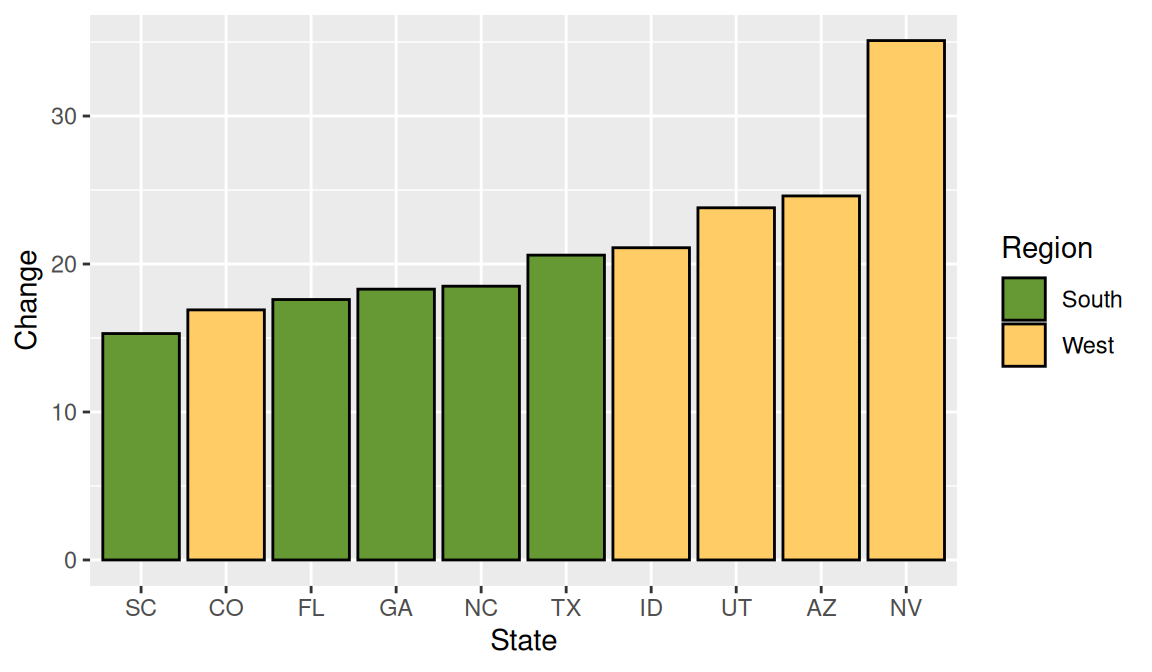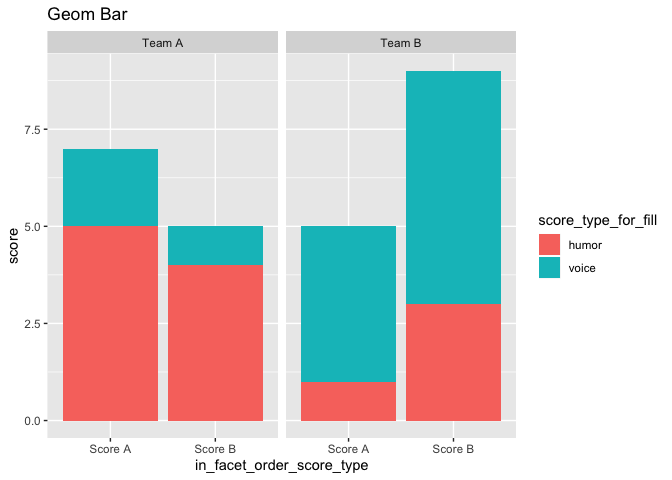
restyle − modify data or data attributes.
#Custom colors stacked bar graph r studio code#
This approach is more advanced than the others and you may need to clear the graphical parameters before the execution of the code to obtain the correct plot, as graphical parameters will be changed.

Other alternative to move the legend is to move it under the bar chart with the layout, par and plot.new functions. Syntax: barplot (H,xlab,ylab,main, names. The function used here to create a stacked bar chart is barplot (). This article discusses how one can be created using R. R plotly bar chart positive/negative values different color second axis. Each bar in a standard bar chart is divided into a number of sub-bars stacked end to end, each one corresponding to a level of the second categorical variable. Legend.text = rownames(my_table), xlim = c(0, 4.25)) Creating a customized stacked bar chart in Plotly is a great way to. I have a bar graph where the color of each bar is dependent on a couple values. barplot(my_table, xlab = "Number of cylinders", stacked area chart or bar chart than the top (Echarts).

Recall that if you assign a barplot to a variable you can store the axis points that correspond to the center of each bar. You could also change the axis limits with the xlim or ylim arguments for vertical and horizontal bar charts, respectively, but note that in this case the value to specify will depend on the number and the width of bars. Also, I would like to have the bars colored each with a different color automatically instead of manually setting colors of. With this example, we’ll use the latter, and we’ll set the outline color of the bars to black, with colour'black' (Figure 3.10). To override this behaviour, you need to define categoryorder and categoryarray for the xaxis inside layout: library (plotly) xform <- list (categoryorder. The default colors aren’t the most appealing, so you may want to set them using scalefillbrewer() or scalefillmanual(). In case of character vectors alphabetically in case of factors by the order of levels. And if you want to then customize the colors, one option is scalefillmanual() . Plotly will order your axes by the order that is present in the data supplied.

# One row, two columnsīarplot(my_table, main = "Absolute frequency",īarplot(prop.table(my_table) * 100, main = "Relative frequency (%)", A bar chart showing the number of cars for each of three types of drive train. However, if you prefer a bar plot with percentages in the vertical axis (the relative frequency), you can use the prop.table function and multiply the result by 100 as follows. Use the function scalefillmanual() to set manually the bars border line colors and area fill colors.

Recall that to create a barplot in R you can use the barplot function setting as a parameter your previously created table to display absolute frequency of the data. Need to create conditional stacked bar chart in Google Data Studio. First, load the data and create a table for the cyl column with the table function. Studio, applying tricks on stacked combo chart, without any custom visualization. Specifically, the example dataset is the well-known mtcars. In this example, we are going to create a barplot from a data frame. 1.1 Barplot graphical parameters: title, axis labels and colorsįor creating a barplot in R you can use the base R barplot function.


 0 kommentar(er)
0 kommentar(er)
